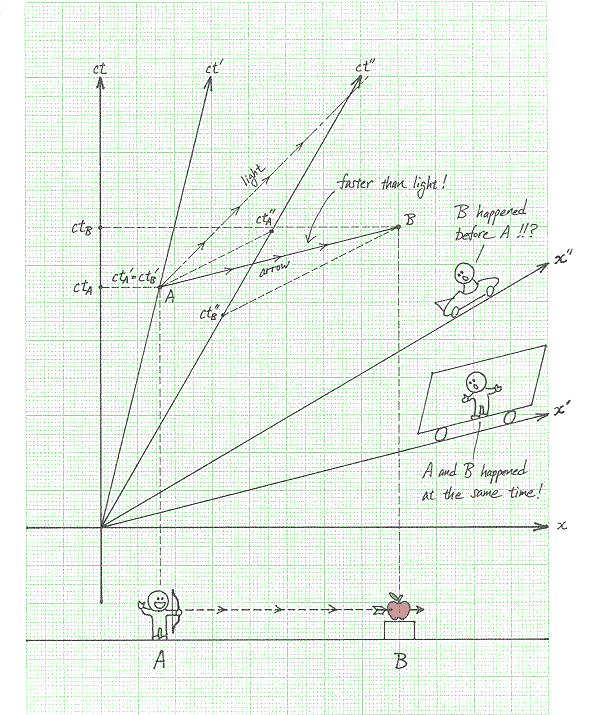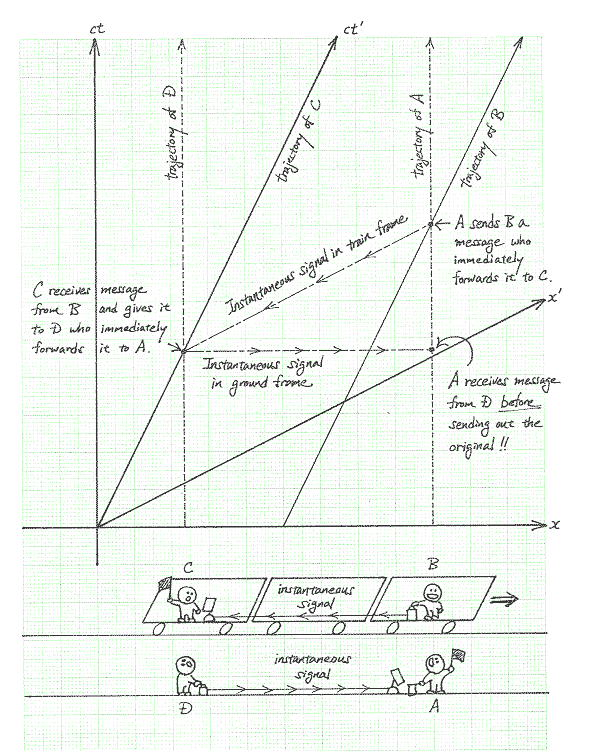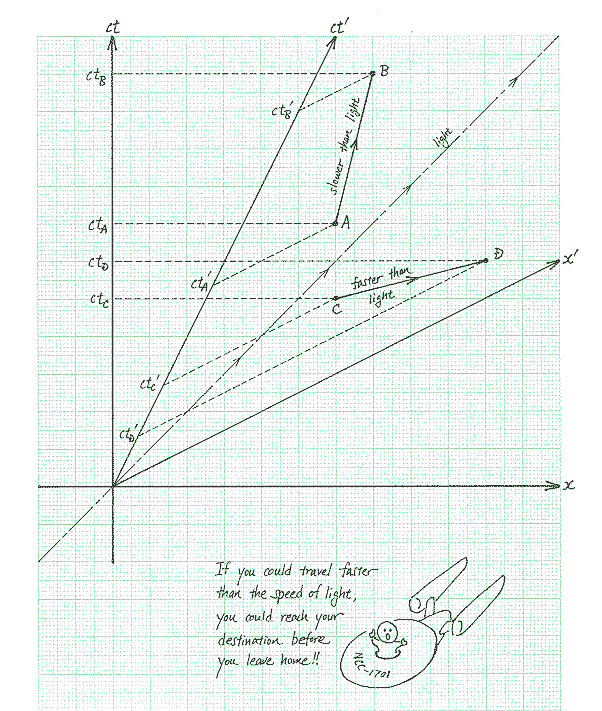

|
College of Science Physics Dept Tatsu Takeuchi Special Relativity Lecture Notes |
 1
2
3
4
5
6
7
8
9
10
11
12
13
14
15
16
17
1
2
3
4
5
6
7
8
9
10
11
12
13
14
15
16
17

10. Faster than Light TravelIf the concept of before and after depends on the observer, we must worry about what happens to the concept of causality. What I mean by causality is the concept of cause and effect. For an event A to be the cause of another event B, then A must occur before B. But if some observers think A happened before B, while others think B happened before A, won't there be a contradiction? For instance, consider the spacetime diagram we just studied in the previous section. Assume that

Let's consider another example. This thought experiment is discussed in Chapter 7 of the book "The Einstein Paradox and other Science Mysteries Solved by Sherlock Holmes" by Colin Bruce (Perseus Books, ISBN 0738200239). Assume that instantaneous communication were possible between remote points. In the spacetime diagram below, A and D are standing by the railroad tracks along which a speeding train passes by carrying B and C. Consider the following sequence of events:

As these examples show, contradictions can occur if objects or signals could travel faster than the speed of light. You could have arrows hitting their targets before they are shot or messages received before they are sent. However, if nothing could travel faster than the speed of light, we would not have this difficulty. This is because for objects or signals traveling at speeds slower than the speed of light from point A to point B, all observers will agree that A happened before B. 
So faster than light travel is impossible. This also means that Newton's second law must be modified since it says that you can accelerate anything to any speed you want. (Note that Newton's first law is still correct.) We won't be looking at HOW it has to be modified though, since it would be too mathematical. All you need to know is that the real theory says that you cannot accelerate things beyond the speed of light. (I'll add a section dealing with how Newton's second law must be modified later.) Some science fiction writers think that some new invention (like the warp drive, whatever that is) may let us accelerate to speeds faster than c. What you need to understand is that faster than light travel breaks causality so that it is inconceivable that some new invention is going to let us do it. Otherwise, we can have faster than light speed travel before we invent it!
|